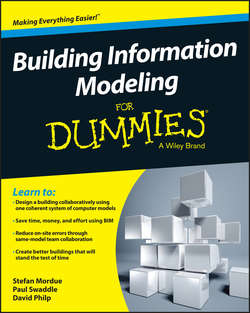Читать книгу Building Information Modeling For Dummies - Swaddle Paul - Страница 14
На сайте Литреса книга снята с продажи.
Part I
Getting Started with Building Information Modeling
Chapter 2
Explaining the Building Part of BIM: It’s Not Just Buildings
Looking at Infrastructure and BIM
ОглавлениеBIM adoption has been slower among infrastructure and civil engineering professionals. Here’s a list of potential reasons:
✔ No real incentive to share information: The traditional “You do your bit, I’ll do mine” is still very common in civil and infrastructure work. Specialist subject areas are technically very complex.
✔ Perception that BIM may delay making site progress: Whereas it is obviously cost effective to design out a clash between pipework and an architectural element in a building project before getting on-site, on a highways project engineers see getting around these issues as standard activity. This is especially true when projects are urgent or working to very tight timescales. Infrastructure clients sometimes see designing out all the clashes ahead of time as inefficient when in fact it could save millions of dollars in the bigger picture.
✔ Lack of software designed to coordinate information at the scale of civil engineering projects: Tools and platforms exist with infrastructure in mind, but they’re generally targeted at one profession or discipline and for specific project sizes.
✔ Information standards are rare and not enforced in the majority of projects: A stalemate results, where teams just continue with existing processes and no overall management of the entire built asset exists. In simple terms, you need to ensure that the trains will fit in the stations.
You can use this train example to explain the need for communication and coordination. In 2014, France’s national rail operator SNCF invested millions in new trains for regional travel. However, the survey of station dimensions was left incomplete, so the trains were designed too wide. This resulted in 1,300 stations needing to be “shaved” in order to fit the new, wider trains. The French government used the unfortunate story as an incentive to encourage information sharing across public-sector organizations and operators.
One of the objectives of the V-Con project for European roads that we mention earlier in this chapter is to produce a standard data-exchange structure for civil road engineering and future management. Having the standard structure in place hopefully will encourage software vendors to develop more advanced tools. The cultural change of users wanting to share their data will take longer to develop!
